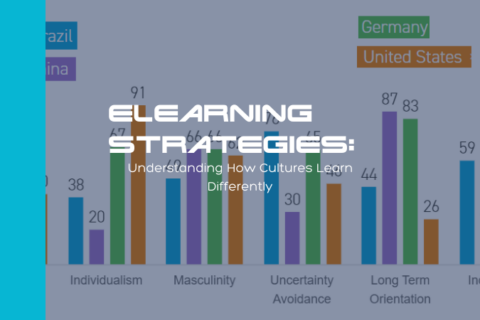3 Ways to Produce Cost-Effective Content for Global Learning
Creating quality Learning and Development content that achieves desired outcomes can be a challenging process. Converting that content, into multi-lingual versions can be overwhelming. In this article, we will discuss 3 ways to produce cost-effective multi-lingual versions of your L&D content through localization.
Localization
The localization after-thought: “Oh, we need to also get this sales training eLearning module into our global offices … call our language vendor now!” Unfortunately, this scenario isn’t the best road to mitigating long-term localization costs and creating content that will engage the learner in other countries and cultures.
For those who are true planners and are interested in saving time and money in localization projects, here are some trade secrets for a hassle-free localization experience that will lead to a budget-friendly outcome.
1. Extensibility
This software engineering term is as appropriate for our Learning and Development industry as it is to the engineering world. It conveys the meaning that in all aspects of developing an authoring tool module, think about every piece of content as being editable and easily substituted. In other words, maximize content flexibility and the capability to expand. For localization purposes, content such as graphic designs should have editable text embedded so it can be easily manipulated.
- Graphic designs/images
All embedded text must be editable within source graphics. - Video/Film #1
Subtitles should be overlaid and not burned. - Video/Film #2
Video background scenes should not rapidly change; new language audio and/or subtitles will be longer in length/time. - Tables of Information
These will expand in any new language – leave white space around in source to absorb the expansion in the new language version. - Length of presentation
Because of text and script expansion during the translation process, the overall module will be 10-25% longer in length (and time). - Authoring tool
The ability of an authoring tool to manage certain multi-lingual versions like Arabic (right-to-left orientation), Thai (double diacritics), and the specific fonts of character-based languages. Some authoring tools (e.g., Articulate Rise) are difficult to work on integrating new language-content within.
2. Instructional Design Of Source
The next steps aim at drilling down to what the Instructional Designer can do while creating the source content to enable a lower-cost localized product.
Minimize Text Creativity
For some Instructional Designers and other content developers, this may come across as unnatural. Yet, translation costs are driven by the number of new words. The more phrases are repeated, previous translations of those phrases can be inserted at basically no charge. Harness the desire to creatively re-state the same idea and save some localization dollars—especially when 5, 10, or 15 languages are involved.
Create White Space
Independent of language pair, translation of content leads to an expanded number of characters or words. In the source language presentation, be sure to leave plenty of “white” space so that the new, translated text, with more characters, can be inserted with minimal impact on graphics and other text.
Note: Some clients insist on limiting the translation through imposing character limitations on the translated version. This can be done but may lead to more risk in capturing the true message.
Slide Complexity
Although animation and images should enhance the engagement experience of the learner, these complexities also add cost to the synchronization effort. If images are to be used, and they contain any text, be sure that the images have text boxes that are editable.
Review Of Translated Script
Your language services vendor should send the translated script before having the voice artist record in the studio. Voice recording is often the primary cost driver for many localization projects. Therefore, to approve the translated script prior to the expensive recording sessions saves both money and time in completing the project.
Voice Options
Professional voice actors recording within a studio environment is the industry standard for multi-media localization. Lower cost technologies are available: subtitling, synthesized voices, field (home) recordings, and text-to-speech software solutions. All of these options have side effects either inaccuracy or ineffectiveness, but they are technologies that may ease the budget issue, especially as technologies evolve.
3. Final Source Content
Perhaps the greatest threat to keeping a localization quote as the truly firm and fixed price is the fluid nature of source content. If the localization effort starts in the midst of changing source content, the vendor has no choice but to continually pass on its additional costs for modifying transcripts, slide translations, voice recordings, and synchronization efforts.
It is always a good idea to speak to your localization provider early in the source design process to gain some perspective on lowering your long-term localization costs. This also allows input regarding how the content may be viewed in other cultures and countries, while the source content is being developed.
This article was published by eLearning Industry on 08.03.18



